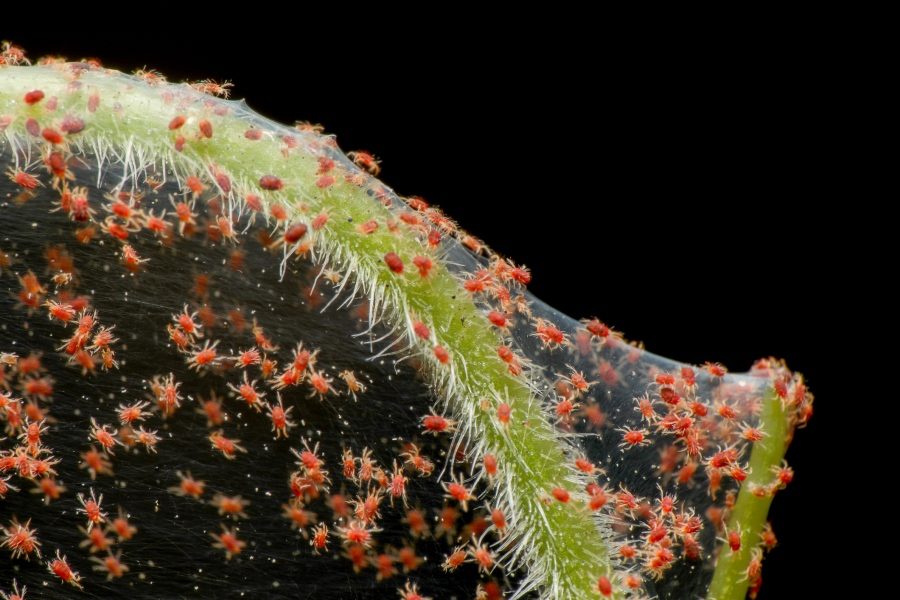Other Common Pests Affecting Succulents and How to Treat Them
Thrips
Thrips are more attracted to a dry environment and dislike moisture, meaning they’re a natural predator for cacti and other succulents. The most difficult thing about thrips is knowing that you have them. These insects are very tiny, and it’s easy to miss them if you’re not paying close attention. It is more likely that succulent owners will notice the damage they leave behind. Thrips cause discoloration on the leaves or stem of affected plants. The damage could be brown, black, or even silver, and looks like streaks or trails where the insect has moved around. You may also see tiny black specks of waste that thrips leave behind. On top of that, your succulent may look generally stressed and unwell if the damage is extensive.

Spider Mites
Like thrips, spider mites are attracted to dry conditions and tend to avoid moist and humid environments, meaning they are often attracted to succulents. Spider mites can be identified by the webbing that they build on plants, usually between the joints and on the underside of leaves. You may also see small brown dots on the leaves, especially tender new leaves. This indicates the damage where the mites have been feeding on the juices. Spider mites can be a variety of colors including red, brown, yellow, or green. While they are difficult to spot, adult spider mites can be seen moving around on their webs.


Treating Succulents Affected by Thrips or Spider Mites
Thrips and spider mites can easily move from one plant to another, so the first thing to do if you’ve spotted these pests on your succulent is to isolate it from the rest of your collection to try to prevent them from spreading to other plants.
In the case of a severe infestation, you may need to prune off the affected areas and throw them away, or even throw out the whole plant. Sometimes it isn’t worth saving a plant that has a lot of insects on it. Otherwise, thrips and spider mites can be treated by spraying the plant with a strong stream of water to knock off the insects. This will need to be repeated periodically to be sure that all of them are removed.

It is also a good idea to treat the plant with a mild insecticidal soap or neem oil. Be sure to check that the treatment method is suitable for the type of succulent you have, and follow instructions carefully to avoid damaging or stressing the plant further. Vegetable oil or rosemary oil is also effective against these pests, as is a diluted rubbing alcohol mixture.
The most important factor in getting rid of insects and keeping them away is to be diligent and monitor your succulent collection closely. It generally takes multiple treatments to completely eradicate pests, but it isn’t difficult or expensive to treat them.
TIP: Prevent pests from attacking your succulents.
While it may not be possible to avoid all pests, you can do several things to limit the chances of bringing spider mites, mealybugs, and other insects into your home. Before buying a new plant, inspect it carefully for signs of insects and don’t buy any infested plants. Quarantine new plants away from the rest of your collection for a couple of weeks.
Neem oil can be used periodically to prevent and treat a variety of problems, including pests. It can be sprayed on a plant or used as a systemic insecticide via a soil drench.